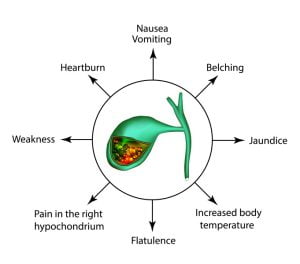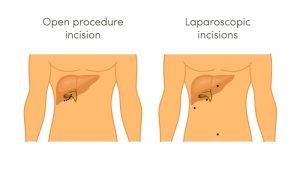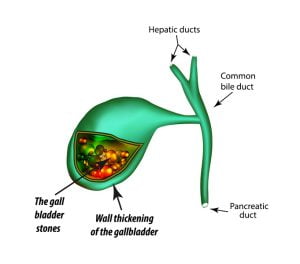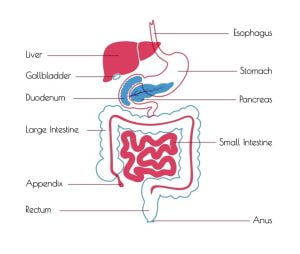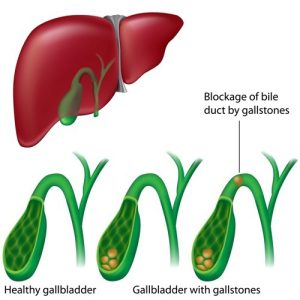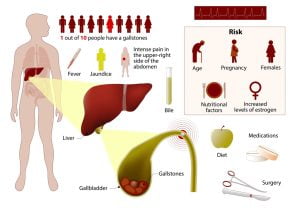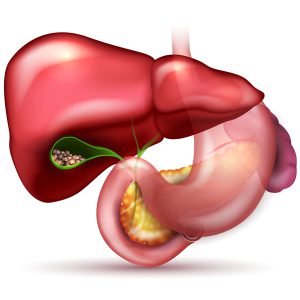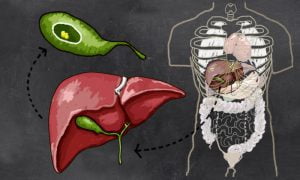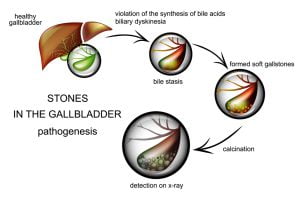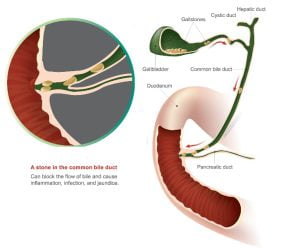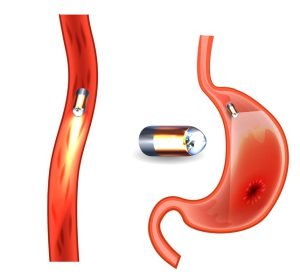Browsing: Gallstones Graphics
Comprehensive Information, Resources, and Support on Gallstones
The most common symptom of a gallbladder stone is pain. But you may not experience any pain until the stones block the bile duct. Nausea and vomiting are also common signs of this problem. In some cases, diarrhea, chest pain, heartburn, indigestion, excessive gas, dark urine, jaundice, etc are also some signs of formation of gallstones. In some cases, there are no signs and symptoms of gallstones.
Cholecystectomy is the surgical removal of gall bladder. It is a common treatment procedure for symptomatic gallstones and other gallbladder conditions. The surgery is done to remove the gallbladder due to the presence of gallstones which causes pain or infection. Cholecystectomy is most often a minimally invasive surgery (MIS). It is performed by inserting a tiny video camera (a laparoscope) and special surgical tools through four small incisions so the surgeon can visualize the abdomen and can easily remove the gallbladder. This is called a laparoscopic cholecystectomy. Less pain and small incisions are great benefits of laparoscopic cholecystectomy as compared to an open cholecystectomy.
Gallbladder stones can cause thickening of the walls and inflammation of the gallbladder (called cholecystitis). It usually occurs when a gallstone blocks the cystic duct.
Digestive system in humans is a group of organs that converts food into energy and basic nutrients which are required by the body. It is made up of gastrointestinal tract (mouth, esophagus, stomach, small intestine, large intestine, and anus), liver, pancreas, and gallbladder. Gallbladder is a hollow pear-shaped structure which is located under the liver and on the right side of the abdomen and is an important part of your digestive system, however people can live without it. Gallstones is a common disease of gallbladder in which small stones form in the gallbladder. Gallstones block the bile duct and cause pain in abdomen.
Gallstones aren’t really stones. They’re small pieces of hardened solid material that form in the gallbladder. Gallbladder is a small organ located under the liver. You might not experience any discomfort or pain until they block the bile duct.
The picture shows a 3D illustration of gallstones in the gallbladder and anatomy of surrounding organs.
The gallbladder is a pear-shaped, hollow structure that is located under the liver and on the right side of the abdomen. The main function of gallbladder is to store and concentrate bile, which is a yellow-brown enzyme produced by the liver to help in digestion. It is part of your biliary tract. An excess of levels in cholesterol, bilirubin, or bile salts can cause gallstones to form in the gallbladder.
The photograph shows pathogenesis of the gallstone disease.
Gallstones are hardened deposits of bile that can form in your gallbladder. Gallstones move out of the gallbladder and can pass into your stomach. However, due to the size of the stone or the anatomy of the biliary tree, a stone might become lodged in the bile duct. Bile duct stones are also gallbladder stones that are stuck in the ducts which lead to the duodenum. These duct stones can be dangerous and cause severe pain. Extended blockage of a bile duct can also cause compilation of waste products in the biliary tract and in the bloodstream which leads to severe infections such as cholangitis.
Capsule endoscopy is a procedure that uses a tiny wireless camera to take pictures of your digestive tract. This helps in diagnpsis of GI problems such as esophageal cancer.
ADVERTISEMENT




